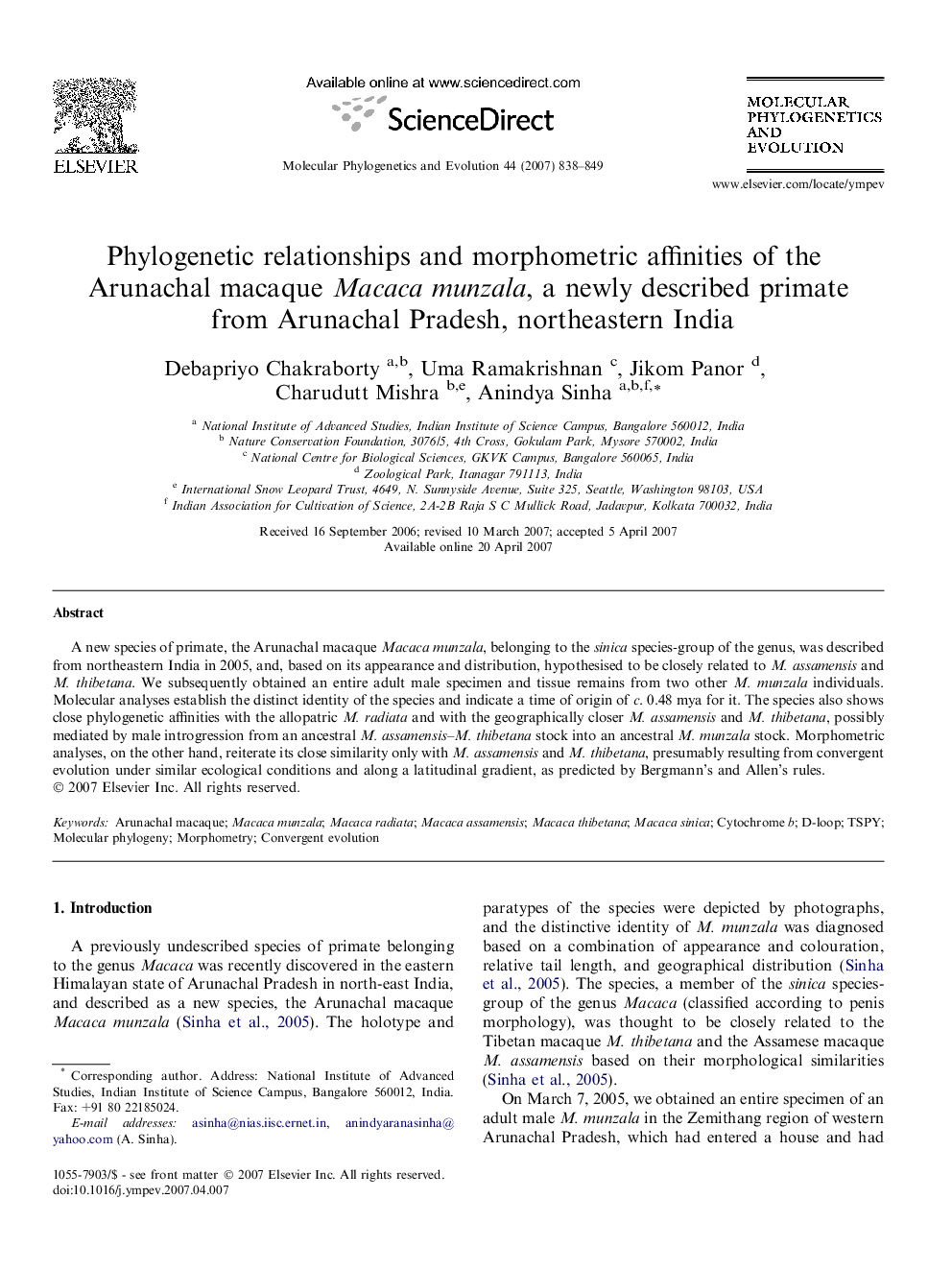| Article ID | Journal | Published Year | Pages | File Type |
|---|---|---|---|---|
| 2835564 | Molecular Phylogenetics and Evolution | 2007 | 12 Pages |
A new species of primate, the Arunachal macaque Macaca munzala, belonging to the sinica species-group of the genus, was described from northeastern India in 2005, and, based on its appearance and distribution, hypothesised to be closely related to M. assamensis and M. thibetana. We subsequently obtained an entire adult male specimen and tissue remains from two other M. munzala individuals. Molecular analyses establish the distinct identity of the species and indicate a time of origin of c. 0.48 mya for it. The species also shows close phylogenetic affinities with the allopatric M. radiata and with the geographically closer M. assamensis and M. thibetana, possibly mediated by male introgression from an ancestral M. assamensis–M. thibetana stock into an ancestral M. munzala stock. Morphometric analyses, on the other hand, reiterate its close similarity only with M. assamensis and M. thibetana, presumably resulting from convergent evolution under similar ecological conditions and along a latitudinal gradient, as predicted by Bergmann’s and Allen’s rules.
